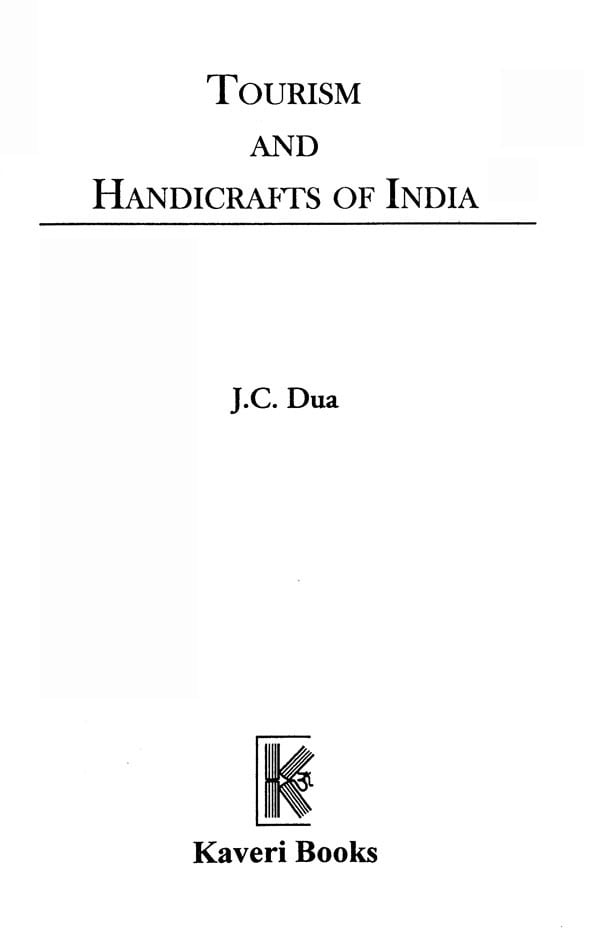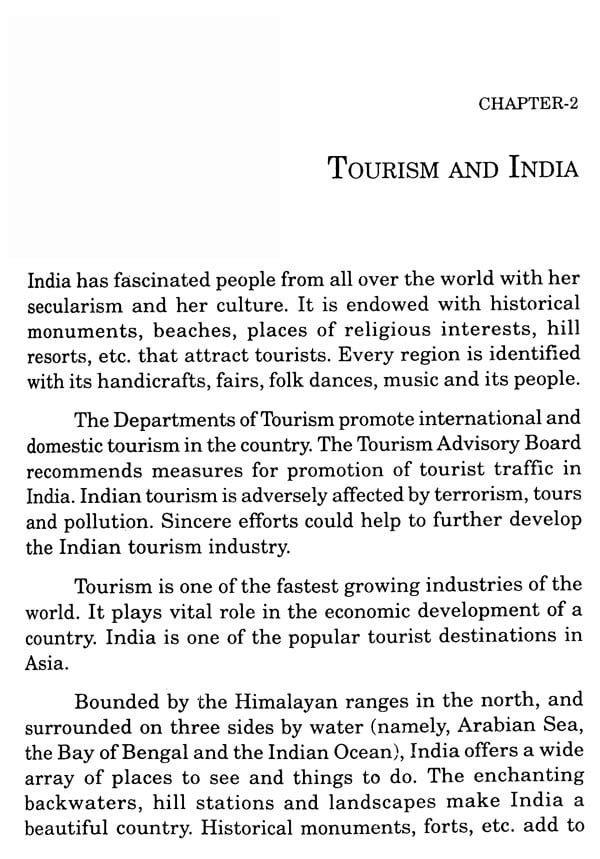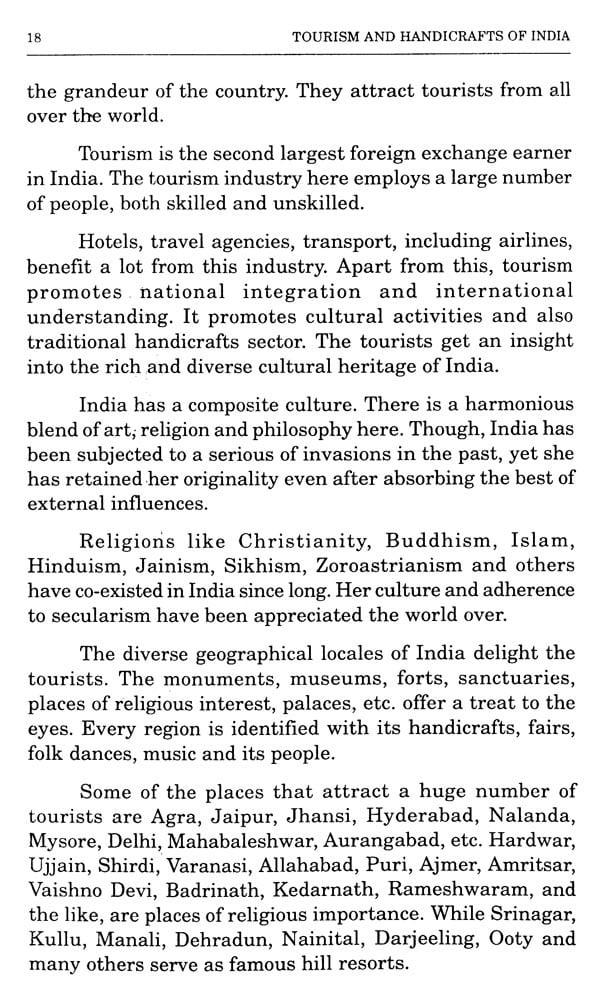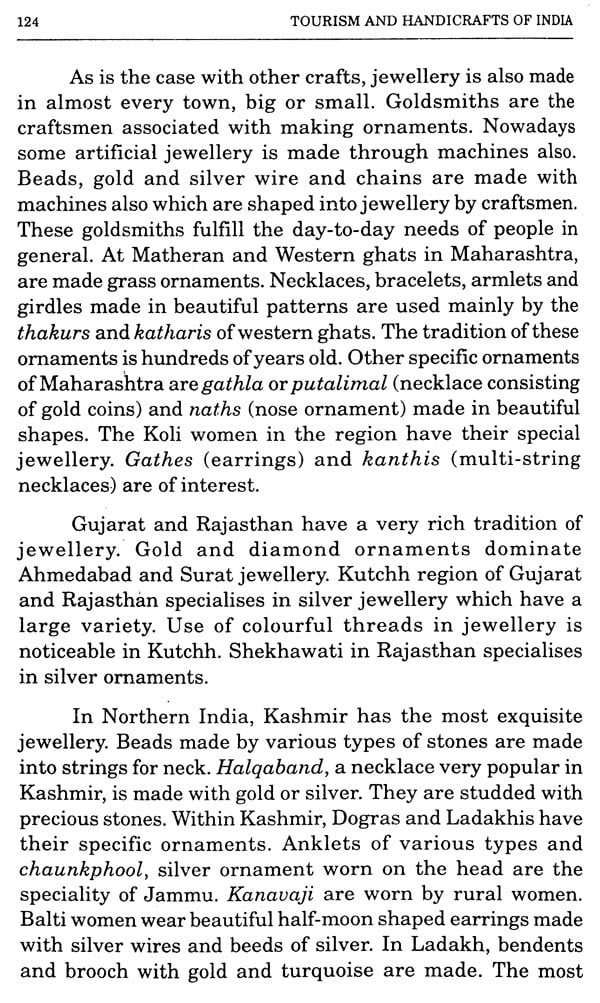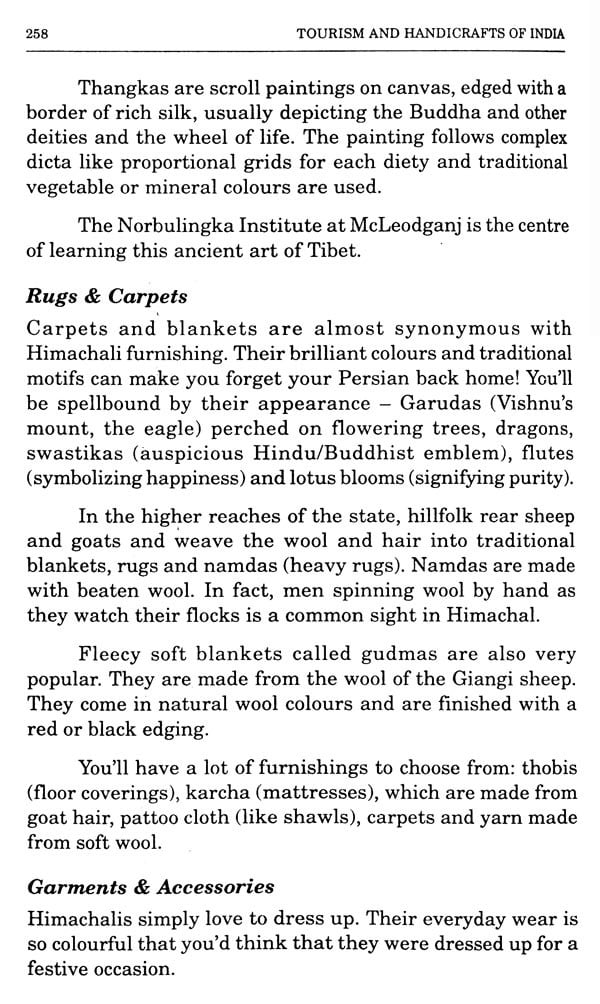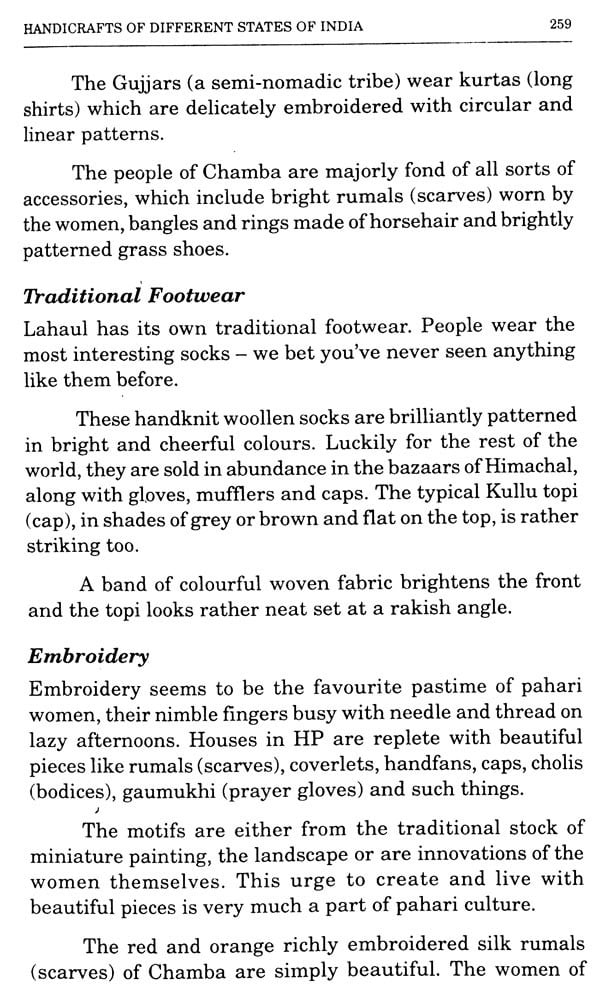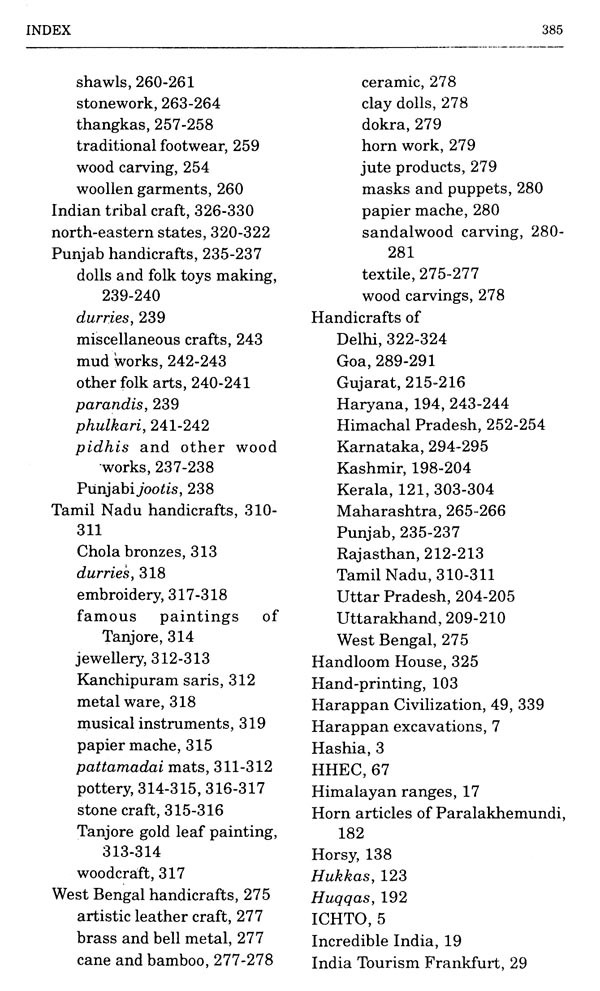
Tourism and Handicrafts of India
Book Specification
| Item Code: | AZG376 |
| Author: | J.C. Dua |
| Publisher: | KAVERI BOOKS |
| Language: | ENGLISH |
| Edition: | 2013 |
| ISBN: | 9788174791474 |
| Pages: | 394 |
| Cover: | HARDCOVER |
| Other Details | 9.00x6.00 inch |
| Weight | 610 gm |
Book Description
Handicrafts provide much needed employment and income opportunities for people traditionally excluded from local economies. Crafts also provide an opportunity for communities to reconnect to their cultural heritage, disappearing traditions, activities and cultural practices. Creating a positive link between the tourism sector and local communities is a further benefit of handicraft tourism.
This book is a compendious volume on tourism products and handicrafts prevalent in different states of India. It presents a vivid exposition of the tradition, heritage and culture of India as reflected by means of handicrafts practiced here, including production techniques of such artifacts. The work beholds the interest of the readers throughout by its lucid account on incredible craft items, like antiques, pottery, fabrics, ornaments, wood work, metal craft and paintings. The meticulous manner and the multifarious issues related to the subject, the book has touched upon; make it a must for connoisseur of arts and a layman, alike.
Dr. Dua has extensively contributed on both Tourism and History South India and Punjab. He was conferred Gold Medal the Government of Bulgaria in 1983. 1989, also acted as Programme Co-ordinator for the Orientation Programme (History) conducted by the Centre for Professional Development in Higher Education, University of Delhi, Delhi. In 1995, was invited to deliver the prestigious Dr. Kalaignar Thiru M. Karunanidhi Endowment Lectures, Madras University, Madras. Dr. Dua was awarded Saropa by the Gurdwara Prabandhak Committee (2002) recognizing the contributions on the history the Sikhs.
part from contributing large number of research papers in both tourism and history the national and international seminars, Dr. Dua has several books to his credit. He also won the Editors for the Collected Works Professor R. Grover.
Tourists do visit a country or a tourist spot may not be for the express purpose of shopping, but shopping is a part and parcel of tourist activity. Tourists thoroughly enjoy buying things that are peculiar to that particular region.
Handicrafts are an important part of shopping. These objects are made by the skill of the hand which is an admixture of tradition and creative craftsmanship. Moreover, handicrafts as souvenirs arouse nostalgia, because symbolic of the place, event or activity, they are status symbol, often utility item or of aesthetic value and sometimes are decorative.
Modern handicrafts evolved after much alteration in the traditional styles. The invasions during ancient periods led to cultural exchanges that in turn flourished the Indian art and architecture. The artisans and craftsmen warmly received new ideas of Persian and Arabic styles.
Indus Valley Civilization showed a remarkable artistic skill and technical excellence in pottery, jewellery, sculpture making and weaving, etc. The designs on the articles represented the activities going around at that time, for instance, discovery of trade routes and dances etc.
**Contents and Sample Pages**
